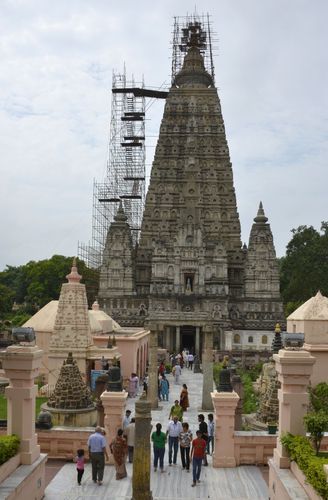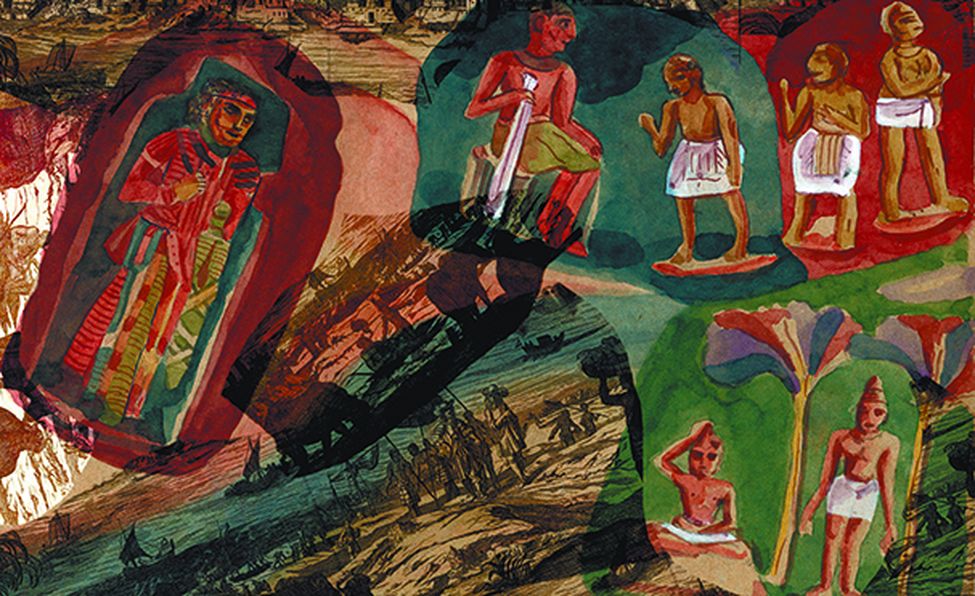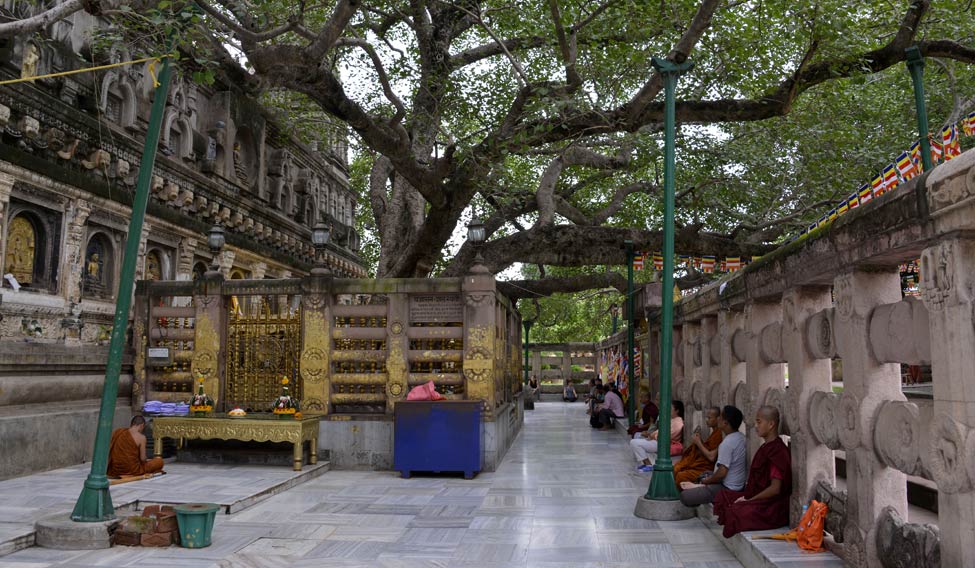The origin of Buddhism owes a great deal to a highborn maiden named Sujata. It was she who spotted an emaciated Gautama meditating under a pipli (peepal tree) at Uruvela, near the ancient pilgrim centre of Gaya. The prince had renounced his family and wealth to lead the life of an ascetic, and his extremely austere ways had him on the verge of collapse. Seeing his gaunt features, Sujata offered him milk-rice, which he accepted gratefully. According to Buddhist texts, not long after he took nourishment, Gautama became the Buddha, the Enlightened One.
Today, the town of Bodhgaya in Bihar stands near the place where Gautama is said to have undergone the spiritual transformation. And, thanks to her gesture, Sujata continues to be remembered here. Several guest houses and landmarks in Bodhgaya are named after her. But the most delectable tribute to her is available at a restaurant near Gaya railway station: a melange of vegetables called the “Sujata veg curry”.
The people of Bodhgaya have contributed immensely to keeping the Buddha’s legacy alive. And so have many foreigners, who have documented the spiritual journey of the Buddha. One of the earliest accounts of the life and achievements of the Buddha and his disciples was written by Chinese monk Faxian, who visited all places associated with the Buddha during his visit to India from AD 399 to 414. His Record of the Buddhistic Kingdoms is perhaps the most reliable piece of writing about the place where Gautama attained enlightenment.
 The Mahabodhi temple | Arvind Jain
The Mahabodhi temple | Arvind Jain
In the journal, he talks about the early disciples of the Buddha and describes how Buddhism spread to places like Sri Lanka. Faxian also writes about the origin of the Festival of Tooth, which is still celebrated in Sri Lanka.
Throughout his account, he pays considerable attention to the Mahabodhi tree at Bodhgaya and its significance in Buddhism. According to Faxian, kings competed with one another either to embrace Buddhism or to force conversion to the faith, thereby reducing the Buddha’s message to a political creed.
At the time of Faxian’s visit, Bodhgaya faced threats from neighbouring pre-Buddhist faiths that continued to challenge the Buddha’s preaching. To have a sense of the tensions that Faxian might have witnessed, one has to go to the Saraswati temple here, which is supposed to have been visited by Adi Shankaracharya. A circular slab of stone lies outside a low-roofed enclosure that houses an ancient idol of Saraswati. A teenaged priest recites, like an automaton, that Gautama sought the blessings of the goddess while meditating on this circular spot. “It was then that he became the Enlightened One,” he says.
The proximity of the Saraswati temple and another temple dedicated to Lord Shiva to the main Buddhist shrine around the Mahabodhi tree is a reminder of the ancient upheavals. That the Mahabodhi temple displayed the Buddha’s messages―‘A man becomes a Brahmin not by birth but by deed’, for instance―would not have helped matters.
Long after Faxian’s visit, King Shashank of Bengal, a staunch enemy of the Buddhist faith, ransacked Bodhgaya in the seventh century. He reportedly cut down the Mahabodhi tree, an act that was considered a blow to the spread of Buddhism in south Asia. Perhaps, Faxian had sensed a political storm brewing when he wrote that, in Bodhgaya, “all was emptiness and desolation”.
Today’s Bodhgaya, however, is far from being desolate. The town is overwhelmingly southeast Asian in its character, thanks to the race among countries of the region to build landmarks that proclaim that they are the true Buddhists. The Jama Masjid of Bodhgaya, which stands right next to the Mahabodhi temple, serves as a reminder to the clashes on the lines of religion in Buddhist-majority countries like Myanmar and Thailand. When a series of blasts rocked the Mahabodhi temple in July, early reports said they were aimed at drawing attention to the atrocities inflicted on Rohingya Muslims in Myanmar.
In essence, the Bodhgaya of today is not far from the one Faxian wrote about: the bedrock of Buddhism, caught in the conflicts that the followers of the faith have entered into in its neighbourhood.

THE pilgrims came to the city of Gaya, [where] all was emptiness and desolation. Going on again to the south for twenty le, they arrived at the place where the Bodhisattva for six years practised with himself painful austerities. All around was forest.... At the place where Buddha attained to perfect Wisdom, there are three monasteries, in all of which there are monks residing. The families of their people around supply the societies of these monks with an abundant sufficiency of what they require, so that there is no lack or stint. The disciplinary rules are strictly observed by them.
―A Record of Buddhistic Kingdoms by Faxian, AD 399 to 414





